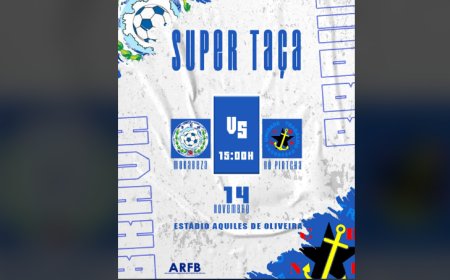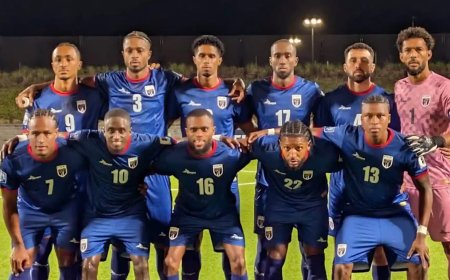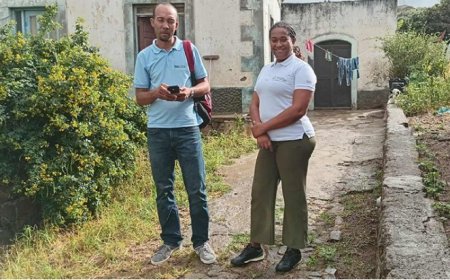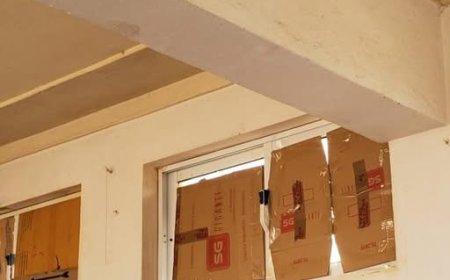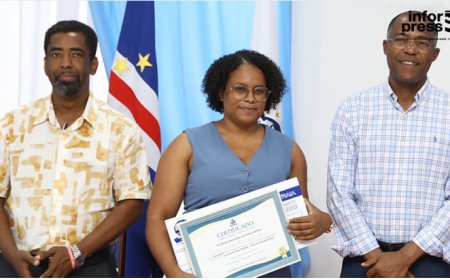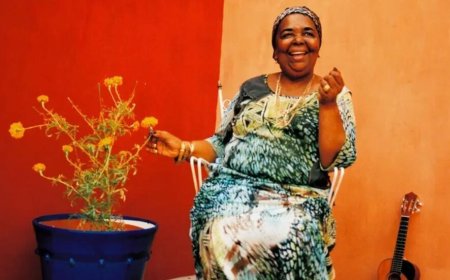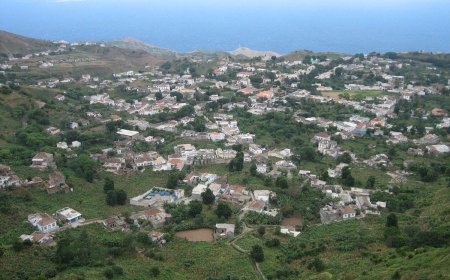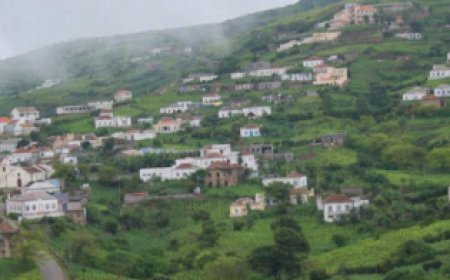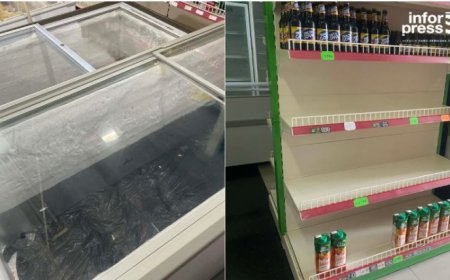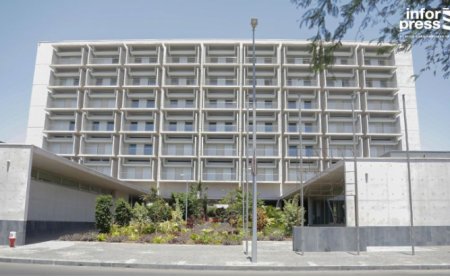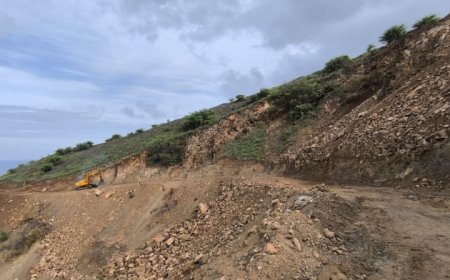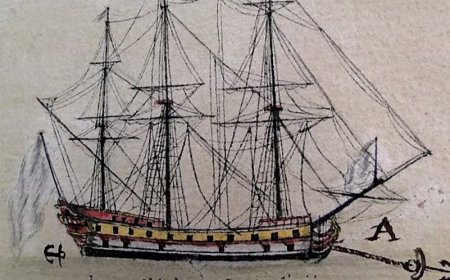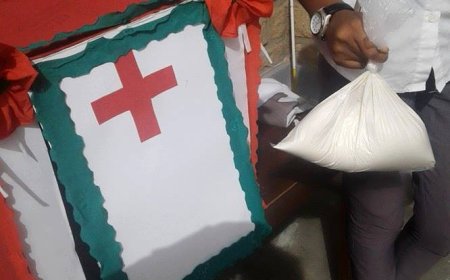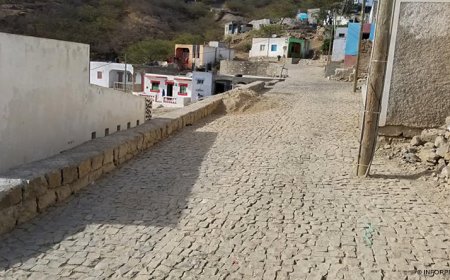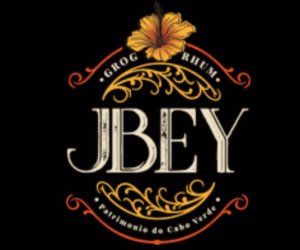Brava é uma das ilhas mais verdes de todo o arquipélago
Brava é uma das ilhas mais verdes de todo o arquipélago e a sua riqueza de flores abunda os olhos de quem, um dia, a proclamou como a “ilha das flores”.
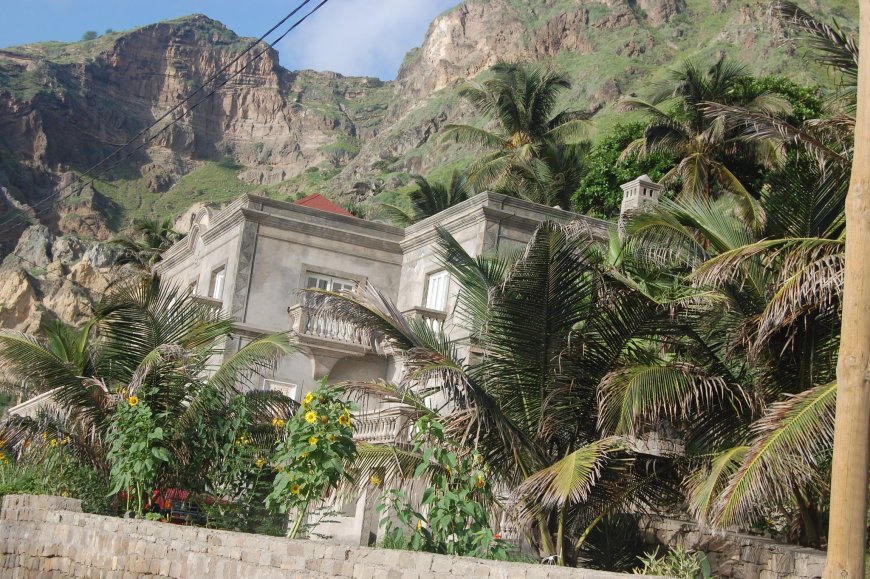
Brava é uma das ilhas mais verdes de todo o arquipélago e a sua riqueza de flores abunda os olhos de quem, um dia, a proclamou como a “ilha das flores”.
Das ilhas habitadas de Cabo Verde, esta é a mais pequena. O verde desta ilha, cheia de encantos por descobrir, traz consigo cenários de diversas cores e aromas, onde os vales profundos contrastam com os picos mais altos. Com um litoral sinuoso, as baías ganham o seu encanto, onde o azul do mar e o verde da terra contrastam com as coloridas embarcações que aí podemos encontrar. Fajã de Água é de visita obrigatória.
A Brava presenteia, por trilhos acidentados, com as cores enérgicas das buganvílias, o aroma do jasmim e a doçura dos hibiscos. Deixe-se igualmente envolver pela mística da Cidade de Nova Sintra, capital da ilha, que possui características marcadamente coloniais.
Não haverá contraste mais surpreendente do que desbravar a exuberância levemente esfumada por nevoeiros persistentes na ilha Brava. Tão perto em distância, menos nas paisagens, da vizinha ilha do Fogo. São pouco mais de 60 quilómetros quadrados situados a oeste, cobertos por uma vegetação esplendorosa, embalada pelos sons inimitáveis das mais belas mornas crioulas do poeta Eugénio Tavares.
A cultura crioula está, aliás, entranhada na Brava, como que numa homenagem perene ao poeta. A população expressa-se, de resto, num crioulo particularmente musical.
Pode o viajante que venha do Fogo, por exemplo, desembarcar no pequeno porto da Furna, protegido numa encantadora baía que proporciona a atividade artesanal da pesca, para além da visita regular do catamaran de ligação ao Porto de Cavaleiros e à Praia. Este é um lugar onde, desde logo, se consuma o primeiro e obrigatório encontro com a ilha, entre a vegetação exuberante e o mar eterno, como cantou o Poeta.
À semelhança de qualquer outra ilha de Cabo Verde, as pequenas frotas de pesca abastecem no essencial as necessidades de alimentação em proteínas das populações, sem menosprezo pelas manadas que pastam no planalto. A Brava não é exceção, e por todo o lado é possível ter à mesa um apetitoso prato de peixe, com predomínio da garoupa pintada, da bica, do esmoregal ou do salmão.
Da Furna à Vila de Nova Sintra, há que vencer as famosas 99 curvas da estrada sinuosa e lenta, que segue depois para sudoeste, em direção ao interior da ilha, ou até Fajã d’Água. Distância curta, mas nada monótona. A paisagem regista cambiantes que encantam, num cenário sempre dominado, ao longe, pelo todo-poderoso vulcão da ilha do Fogo. A emoção e a contemplação unem-se com harmonia, para desfrute do viajante, mesmo em discretos locais que nem sempre figuram nos roteiros. Por mil e uma razões, que aqui se sucedem de maneira extasiante, há quem considere a Brava a mais bela ilha de Cabo Verde.
Não será difícil entender as razões do batismo da capital da ilha Brava como Nova Sintra, considerada por alguns a mais bela cidade do arquipélago. A Sintra portuguesa foi a inspiração óbvia da designação deste cativante espaço formado por casas de sonho envolvidas por jardins sempre floridos e no qual também abundam as hortas amorosamente cultivadas.
A praça central Eugénio Tavares simboliza em Nova Sintra a maneira como a natureza ornamenta a ilha. Beneficiando de condições climáticas únicas, humidade e frescura permanentes, flores e árvores de uma variedade surpreendente juntam-se por onde a vista alcança numa pujança que persiste e se renova o ano inteiro. Tudo isto envolvendo uma arquitetura encantadora e bem conservada.
Aqui passam-se momentos de contemplação agradáveis e serenos, não sendo difícil perceber a razão pela qual também chamam à Brava a ilha das flores e das mulheres bonitas. E também a dos poetas, sobretudo porque Eugénio Tavares deixou para sempre a sua marca profunda neste lugar que o inspirou e que adotou com orgulho.
De Nova Sintra há que subir a Nossa Senhora do Monte e penetrar no planalto central para se dar conta da importância que estes vastos campos tiveram na História da Brava. A lavoura é ainda aqui farta, até ao Cachaço e ao Monte da Ponta Verde.
De resto, há quatro percursos pedestres obrigatórios para quem se dispõe a permanecer alguns dias na Brava: subir do Mato ao Pico das Fontainhas, o mais elevado da ilha (750m); descer do Campo Baixo ao Porto de Tantum, com a respetiva povoação alcandorada numa falésia; ligar o Mato Grande ao Cachaço, passando por Chão de Aguada e pela casa onde Eugénio Tavares parava para compor as suas mornas; e da Furna a Vinagre, passando abaixo de Santa Bárbara.
Fonte do Vinagre é um nome estranho para uma nascente peculiar que atrai os habitantes dos lugares desta região. A água que daqui brota tem um sabor ácido e tais características granjearam-lhe a fama de proporcionar benefícios medicinais. Supõe-se que a causa do fenómeno seja a existência de um subsolo onde haverá um importante filão de metais. Seja como for, apesar da fama, as circunstâncias aconselham o uso moderado desta a água mineral. Os habitantes da região sofrem de problemas de descalcificação, facto que poderá estar ligado ao consumo regular desta água.
Estando a Furna, zona piscatória na região nordeste da ilha, exposta aos ventos dominantes, nem sempre pode consolar-se com a paz que podemos encontrar na Fajã d’Água, abrigada na zona noroeste. Descer a pé o percurso da Ribeira d’Água até à Fajã é uma delícia para os olhos, que hesitam entre o viço do verde vivo da paisagem e o azul intenso do mar, fruindo esta autêntica dádiva da natureza.
A baía da Fajã é muito acolhedora, especialmente apreciada em dias de tempestade, quando outras zonas da ilha são assoladas pela intempérie. Daí que seja também um local excelente para os pescadores desportivos, que não se fazem rogados em tirar partido de condições tão favoráveis. Também as festividades e as condições naturais aqui existentes, como por exemplo a atraente piscina natural, tornam este lugar especial e único para tranquilas caminhadas e outras atividades próprias do conceito de ecoturismo, promovendo uma convivência respeitadora entre o homem e a natureza.
As características acolhedoras da Fajã tornaram-se especialmente conhecidas quando permitiram que servissem de porto de abrigo aos baleeiros americanos que faziam a faina nestas paragens do Atlântico. Desta convergência tornada convivência regular nasceu a quase exclusiva emigração dos habitantes desta zona para os Estados Unidos da América. De tal modo que as referências a este país são comuns na vida quotidiana da Brava, seja na linguagem, seja até nos hábitos de consumo. Que não dispensa, porém, o incontornável futebol ou os matraquilhos, a que até as moças aderem com graciosa aplicação.
Também não é difícil perceber a importância da música tradicional, como a colinha e, principalmente, a morna, na vida quotidiana da Ilha Brava. Esta expressão musical da poesia nasceu na Boa Vista mas é muito especial na “ilha das flores”. Aqui a morna canta o casamento do homem com o mar, e canta sobretudo o amor e a saudade, nela se refletindo a alma de Eugénio Tavares e a saga migratória e aventureira do povo desta ilha.
Visite-nos
#Cape Green#
Brava is one of the greenest islands in the entire archipelago and its wealth of flowers abounds in the eyes of those who, one day, proclaimed it the “island of flowers”.
Of the inhabited islands of Cape Verde, this is the smallest. The green of this island, full of undiscovered charms, brings with it scenarios of different colors and aromas, where the deep valleys contrast with the highest peaks. With a winding coastline, the bays gain their charm, where the blue of the sea and the green of the earth contrast with the colorful boats that can be found there. Fajã de Água is a must visit.
Brava presents, along rough trails, the energetic colors of bougainvillea, the scent of jasmine and the sweetness of hibiscus. Let yourself be enveloped by the mystique of the City of Nova Sintra, the capital of the island, which has markedly colonial characteristics.
There will be no more surprising contrast than discovering the exuberance slightly smoky by persistent fog on Brava Island. So close in distance, less in the landscapes, to the neighboring island of Fogo. There are just over 60 square kilometers located to the west, covered by splendorous vegetation, lulled by the inimitable sounds of the most beautiful warm creoles by the poet Eugénio Tavares.
Creole culture is, moreover, ingrained in Brava, as if in a perennial homage to the poet. The population expresses itself, moreover, in a particularly musical creole.
The traveler coming from Fogo, for example, can disembark at the small port of Furna, protected in a charming bay that offers artisanal fishing activities, in addition to the regular visit of the catamaran connecting to Porto de Cavaleiros and the beach. This is a place where, from the outset, the first and obligatory encounter with the island takes place, between the exuberant vegetation and the eternal sea, as the Poet sang.
Like any other island in Cape Verde, the small fishing fleets essentially supply the population's protein needs, without neglecting the herds that graze on the plateau. Brava is no exception, and everywhere you can have an appetizing fish dish, with a predominance of spotted grouper, bica, esmoregal or salmon.
From Furna to Vila de Nova Sintra, you have to overcome the famous 99 curves of the winding and slow road, which then heads southwest, towards the interior of the island, or to Fajã d’Água. Short distance, but not monotonous. The landscape registers enchanting nuances, in a scenario always dominated, in the distance, by the almighty volcano of the island of Fogo. Emotion and contemplation come together harmoniously, for the enjoyment of the traveler, even in discreet places that are not always included in the itineraries. For a thousand and one reasons, which follow one another here in an ecstatic way, some consider Brava to be the most beautiful island in Cape Verde.
It will not be difficult to understand the reasons for the baptism of the capital of the island of Brava as Nova Sintra, considered by some to be the most beautiful city in the archipelago. Portuguese Sintra was the obvious inspiration for the designation of this captivating space made up of dream houses surrounded by gardens that are always in bloom and which also have an abundance of lovingly cultivated vegetable gardens.
The central square Eugénio Tavares symbolizes in Nova Sintra the way in which nature decorates the island. Benefiting from unique climatic conditions, permanent humidity and freshness, flowers and trees of a surprising variety come together wherever the eye can see in a vigor that persists and renews itself throughout the year. All of this involving charming and well-preserved architecture.
Here, pleasant and serene moments of contemplation are spent, and it is not difficult to understand why Brava is also called the island of flowers and beautiful women. And also that of poets, above all because Eugénio Tavares forever left his deep mark on this place that inspired him and which he adopted with pride.
From Nova Sintra, you have to climb Nossa Senhora do Monte and penetrate the central plateau to realize the importance that these vast fields had in the History of Brava. Crops are still plentiful here, as far as Cachaço and Monte da Ponta Verde.
Moreover, there are four obligatory walking routes for those willing to spend a few days on Brava: going up from Mato to Pico das Fontainhas, the highest on the island (750m); descend from Campo Baixo to Porto de Tantum, with the respective village perched on a cliff; connecting Mato Grande to Cachaço, passing through Chão de Aguada and the house where Eugénio Tavares stopped to compose his mornas; and from Furna to Vinagre, passing below Santa Bárbara.
Fonte do Vinagre is a strange name for a peculiar spring that attracts the inhabitants of the places in this region. The water that flows from here has an acidic taste and these characteristics have earned it the reputation of providing medicinal benefits. It is assumed that the cause of the phenomenon is the existence of a subsoil where there will be an important vein of metals. In any case, despite its fame, circumstances advise the moderate use of this The mineral water. The inhabitants of the region suffer from softening problems, a fact that could be linked to the regular consumption of this water.
Since Furna, a fishing area in the northeast region of the island, is exposed to prevailing winds, you cannot always take comfort in the peace that you can find in Fajã d’Água, sheltered in the northwest area. Walking down the path from Ribeira d’Água to Fajã is a delight for the eyes, which hesitate between the lush green of the landscape and the intense blue of the sea, enjoying this authentic gift of nature.
Fajã bay is very welcoming, especially appreciated on stormy days, when other areas of the island are ravaged by the weather. Hence it is also an excellent place for sport fishermen, who are not begged to take advantage of such favorable conditions. Also, the festivities and natural conditions existing here, such as the attractive natural pool, make this a special and unique place for peaceful walks and other activities typical of the ecotourism concept, promoting a respectful coexistence between man and nature.
The welcoming characteristics of Fajã became especially well-known when they allowed it to serve as a safe haven for American whalers who worked in these parts of the Atlantic. From this convergence, which became regular coexistence, the almost exclusive emigration of the inhabitants of this area to the United States of America was born. In such a way that references to this country are common in Brava's daily life, whether in language or even in consumption habits. Which, however, does not dispense with the unavoidable football or table football, which even the girls adhere to with graceful diligence.
It is also not difficult to understand the importance of traditional music, such as colinha and, mainly, morna, in the daily life of Ilha Brava. This musical expression of poetry was born in Boa Vista but is very special on the “island of flowers”. Here, the morna sings of man's marriage to the sea, and sings above all of love and nostalgia, reflecting in it the soul of Eugénio Tavares and the migratory and adventurous saga of the people of this island.



